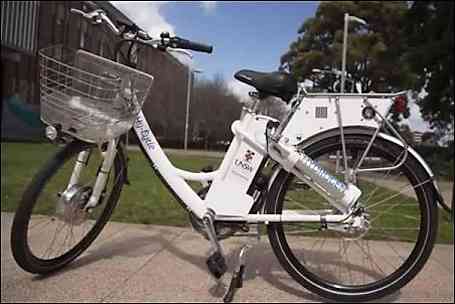
Commuting is a big part of everyday life, whether by train, car, or bicycle. Many travelers look to find a greener and more environmentally friendly way to get from point A to point B, but find that cycling can sometimes be too difficult or tiring. Cue the fuel cell bike. Fuel cell bicycles aren’t a new concept, however they haven’t really gained momentum in the consumer market just yet.
The process of making a fuel cell bicycle for practical use has been relatively difficult, which is perhaps why the market has remained stale. In 2006, a company known as Veloform was developing a methanol fueled three wheeler, which they called the City Cruiser II. Just a year later, a Chinese company, Shanghai Pearl Hydrogen Power Source Technology Co., introduced a hydrogen fuel cell bicycle that cost around $2,600, and had a fuel tank distance of nearly 60 miles.
The newest generation of fuel cell bicycles comes from a group of students at the University of New South Wales in Australia. The school researchers have developed the Hy-Cycle (pictured at top), a hydrogen fuel-cell bike that boasts an 80 mile fuel tank distance, which roughly equals about $2 worth of hydrogen. The fuel canister has a capacity of 2.5 kilograms, and it may take a little effort to fill, but researchers are now working on ways to increase hydrogen storage capacity.
The bicycle was designed and built by technical office Paul Brockbank from the University’s School of Chemical Engineering, and associate professor Kondo-Francois Aguey-Zinsou. The hydrogen cell makes climbing hills or long distance commuting easier on travelers by providing assistance with pedaling the bike.
Since electric bikes are already popular item on the market, critics of the fuel cell bike suggest that it makes more sense to use a battery to power the bike as opposed to hydrogen. However, the fuel cell on the Hy-Cycle can lead to the development of hydrogen powered bicycles to finally make their mark on consumers as a cheap and sustainable form of transportation. Aguey-Zinsou says that a key market for the Hy-Cycle are cities like London and Paris, which are currently renting bikes for hire for business people and the like to commute to and from work.
The biggest advantage to the Hy-Cycle is the ability to use hydrogen as a clean, sustainable, and safe source of energy. Hydrogen storage has been a researched topic for years, as scientists and engineers try to find a safe and effective method of storing compressed hydrogen. Because hydrogen is a light gas, it’s difficult to contain in a compact form.
The Hy-Cycle features a 2.5 kilogram canister located near the pedals. The fuel cell is under the seat, and aims to provide continuous recharging to the lithium ion battery that powers the Hy-Cycle. The developers are studying new methods to store 100 liters of hydrogen in the same canister, but while using only 30 grams of metal hydride, which makes for user-friendly and safe storage of the hydrogen fuel.